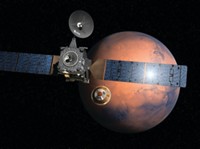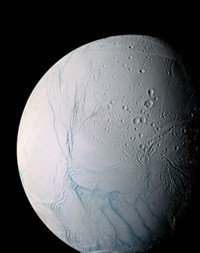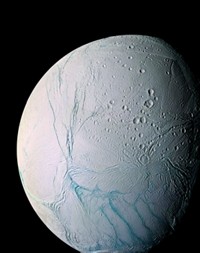Advertisement
Grab your lab coat. Let's get started
Welcome!
Welcome!
Create an account below to get 6 C&EN articles per month, receive newsletters and more - all free.
It seems this is your first time logging in online. Please enter the following information to continue.
As an ACS member you automatically get access to this site. All we need is few more details to create your reading experience.
Not you? Sign in with a different account.
Not you? Sign in with a different account.
ERROR 1
ERROR 1
ERROR 2
ERROR 2
ERROR 2
ERROR 2
ERROR 2
Password and Confirm password must match.
If you have an ACS member number, please enter it here so we can link this account to your membership. (optional)
ERROR 2
ACS values your privacy. By submitting your information, you are gaining access to C&EN and subscribing to our weekly newsletter. We use the information you provide to make your reading experience better, and we will never sell your data to third party members.
Physical Chemistry
Cassini Spacecraft To Dive Through Water Jets On Saturn’s Moon
Space Chemistry: Plumes from Enceladus may reveal whether the moon can host life
by Elizabeth K. Wilson
October 27, 2015
On Wednesday, Oct. 28, the National Aeronautics & Space Administration’s Saturn-orbiting spacecraft Cassini is set to fly through plumes of water on Saturn’s moon Enceladus. This historic maneuver may help establish the moon’s ability to support life.

Scientists recently discovered that a salty ocean lies beneath the ice-covered Enceladus. Similarly, one of Jupiter’s moons, Europa, is also believed to have a sub-ice ocean, making these bodies of intense interest for future missions looking for habitable spots in the solar system.
“This is a very big step in a new era of exploring ocean worlds in our solar system,” Curt Niebur, Cassini program scientist at NASA, said at an Oct. 26 conference announcing the Enceladus flyby.
Cassini has flown by Enceladus water plumes, which spray through fractures in its icy surface, many times before. However, this event will take the craft only 30 km above the surface, and directly through the plumes, where spectrometers will monitor the chemical makeup of the liquid.
During the previous flybys, scientists had identified NaCl, CO2, and organic molecules such as methane, propane, acetylene, and formaldehyde, in the plumes. They also know the water’s pH falls between 9 and 11, conditions that are “favorable for life,” said Linda Spilker, Cassini project scientist at NASA’s Jet Propulsion Laboratory, during the press conference.
With this close flyby, the scientists will look for confirmation of the presence of H2, which is produced through geothermal chemistry, and will help establish Enceladus’s level of hydrothermal activity.
The team hopes to identify more organic molecules in this flyby, but they emphasized that the craft’s spectrometers can’t detect large biomolecules, such as DNA.
After the flyby, the team will spend weeks analyzing the data before announcing their findings.





Join the conversation
Contact the reporter
Submit a Letter to the Editor for publication
Engage with us on Twitter